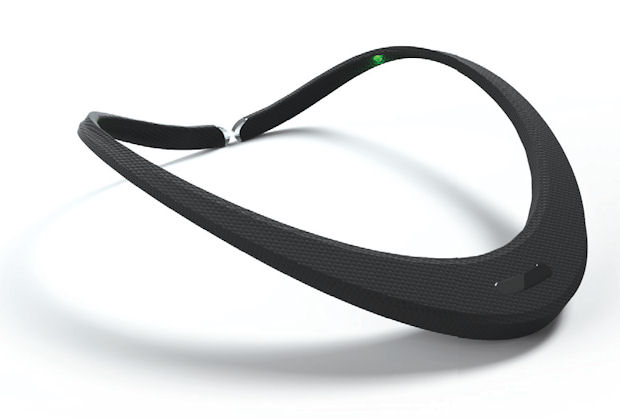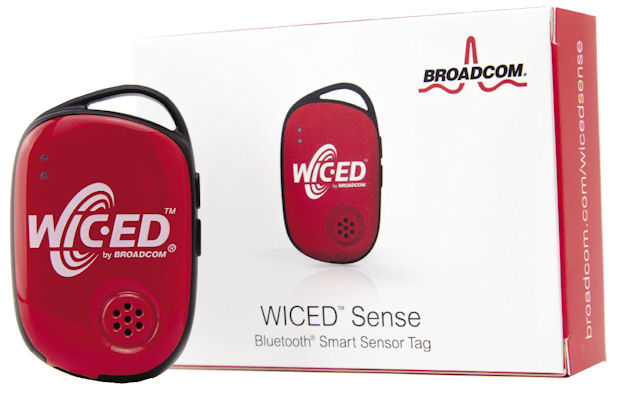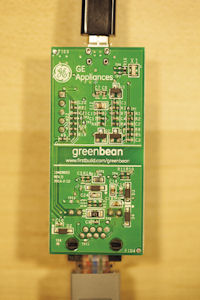Designing the Internet of Things

ollo wearables’ Loop telecommunication device, designed in Autodesk Inventor and rendered in Luxion KeyShot.
Latest News
November 1, 2014
 ollo wearables’ Loop telecommunication device, designed in Autodesk Inventor and rendered in Luxion KeyShot.
ollo wearables’ Loop telecommunication device, designed in Autodesk Inventor and rendered in Luxion KeyShot.For Ken Macken and his colleagues at ollo wearables, the phrase “Keep me in the loop” is more than a figure of speech. The personal telecommunication device they’re developing is codenamed Loop. At a recent press event hosted by the California-headquartered semiconductor firm Broadcom, ollo wearables CEO Hugh Geiger appeared with an early model of Loop around his neck. With smooth surfaces and tapered ends, it looked a bit like a crescent-shaped boomerang with a mouthpiece.
“We’re trying to reimagine the smartphone experience,” Geiger said at the event. “We want to explore new ways you might interact with your phone.”
With the microphone positioned below his lips, Geiger issued dialing commands without ever using his hands to access a menu or push a button.
Macken, who had worked with vision-guided robotics and minting machines in his previous jobs, describes his background as “old-school mechanical engineering.” Soon after launching ollo wearables, Macken quickly discovered the importance of aesthetic appeal.
“If we make something that works well in its engineering, but is not aesthetically pleasing, nobody will buy it,” he observes. “People prefer to buy a device that looks great, but doesn’t have a lot of features over the one with all the features they want, but looks horrible. And they’re willing to pay more for the former. We found that out from our own research.”
In traditional engineering, function takes precedence, he notes. “There, you make sure all your mechanical and electrical components work well, then you wrap a nice shell around it,” he says. “But here, we design something beautiful first, something the user would want to keep on himself or herself all the times, and then we go about fitting the components in it. We transitioned from an engineering company to a design company.”
That mindset shift is critical in developing highly personalized Internet of Things (IoT) devices, Macken says.
Shortcut to Compliance
Macken and his colleagues have developed as many as six different variations of Loop. Macken is also the principal CAD modeler on the Loop project. He uses a combination of Autodesk Inventor and SketchUp to sculpt the design in 3D. “I import hand-drawn sketches into Inventor and then create digital sketches from them,” he says. The same CAD model serves as the basis for photorealistic renderings done in Luxion Keyshot, used for presentation and marketing.
Aside from the on-off button, there are hardly any other mechanical components in Loop. Most functions—locating contact info, dialing, setting up alerts, etc.—will be driven by voice commands. In fact, even the on-off function can be voice-activated, Macken reveals. But the engineers chose to include a hard button because they discovered that, when it comes to switching the device on or off, consumers are not yet ready to give up the tactile sensation.
One ongoing, critical decision for ollo wearables is selecting a chipset that can power these functions through a combination of embedded electronics and software. “We can probably get a gray-label chipset from overseas and make it work,” says Macken. “But we’re looking for support, high reliability and compliance.”
Using a chipset that’s known to comply with industry standards and local regulations, he points out, goes a long way to remove potential roadblocks in getting their own device approved for sales. Macken and his colleagues are currently testing out Loop with chipsets from Qualcomm, Texas Instruments and Broadcom.
Personal User Experience
In the test versions of Loop, the device runs on custom firmware, but ollo wearables plans to migrate to Android OS. “Loop is more than a device,” says Macken. “It’s a software and services platform.”
The emphasis on software makes the device easy to update without any mechanical intervention. Perhaps more important, the software and services facilitate the personalization that’s a common IoT characteristic.
Loop won’t be as sassy or artificial intelligence (AI)-like as the fictional OS Sam in the futuristic romantic comedy “Her,” but Macken says, “We’re trying to anticipate what a user wants to do and execute it before being asked to do it. For example, Loop might read out the weather every morning after the alarm if that’s what you typically do. And if you usually call your mom every Sunday around 11, on the Sunday you don’t call, Loop can issue an alert: Did you forget to make that call?”
The Cloud is Essential
Many of the predictive functions in Loop are driven by historic user behavior, like the type of calls regularly made on a certain day or the type of data requested from the device. Because it’s not feasible to always store and maintain that ever-growing data in a device the size of a USB thumb drive, streaming data to and from the cloud is the best option.
“Our device is connected to the cloud, controlled by the cloud,” Macken says. “There are trigger events that occur in the cloud. They activate other triggers. [The cloud] is a huge part of our efforts.”
As a small startup, ollo wearables doesn’t maintain its own data centers. Instead, it partners with Rackspace, a managed cloud solution provider. The Rackspace database for ollo wearables is duplicated in several geographic locations, so it can quickly stream to users located in different regions.
GE’s Brain Surgery
If you’re an appliance maker that manufacturers and trades in large volumes based on established supply chains, how would you respond to the IoT consumer’s preference and insistence on a personalized user experience? If you’re GE, you’d plant the seed for a community of tinkerers, hackers and programmers who could develop apps and gadgets to augment your ovens, dishwashers and laundry machines.
GE recently released the Green Bean Maker Module ($19.95), a circuit board that the company calls “a direct path into the brain of your GE appliances.” Plugging the Green Bean into the appropriate port in a GE appliance, anyone with programming know-how may interact directly with the microprocessor inside the unit.
Taylor Dawson, a GE appliance engineer and GE product enthusiast, characterizes Green Bean as a device “that appeals to tinkerers and makers capable of developing hardware or software for their dishwashers or laundry machines. Our vision is to create a community of people who can share and refine these applications.”
The Idea Garden
Even in its nascent stage, the budding Green Bean user community, dubbed FirstBuild, has already produced projects and ideas aplenty. From Joan from Louisville, KY, came the idea for an app that generates recipes based on the ingredients available in a refrigerator. Nathan from San Francisco thinks it’s a good idea to equip the trash can with a barcode scanner. That way, it can “add items to your shopping list whenever you throw away an empty container,” he writes.
FirstBuild also issues challenges to invite new ideas. Winners stand to earn as much as $2,500 for their ideas, along the chance to earn royalties for subsequent GE products that incorporate the idea. At press time, the challenge urges food enthusiasts to come up with a way to bring indoors what has always been an outdoor activity: grilling. James from Auburn, AK, thinks you can stop the smoke right at the source by incorporating a water container beneath the burner. But Darren, another community member, thinks built-in venting systems and fans are the way to go.
“We want the community members to take pride in what they have done,” Dawson says. “We want them to say, I had an impact on a major GE appliance that’s now in use in millions of homes.”
GE’s FirstBuild initiative suggests the company considers the talent of the crowd to be a tremendous source of IoT innovation. Shelley Gretlein, director of platform software at National Instruments (NI), similarly points to Instructables, a maker community (acquired by Autodesk in 2011), as a fertile ground for homegrown IoT projects.
“More connections and more innovation mean more opportunity for device and system simulation, as well as an increase in the need for more CAD designs,” Gretlein says. “This growth, combined with the increased capabilities of 3D printers, creates a productive system among device design in CAD, system simulation and almost-instantaneous device creation/printing.”
Self-Aware Components
The integration of sensors and electronic components adds complexity to product testing and simulation.
“Previously ‘dumb’ nodes in a system now need to be tested for their communication and interactions with the rest of the system, adding a test burden that some designers may not account for in the initial prototype,” Gretlein says. “Sensor integration in the IoT world will look much different than the past. Sensors will know about themselves, the product, and the operations. This built-in communication allows for in-field serviceability and upgrades.”
For traditional mechanical engineers, IoT components require much more than physical space allocation inside the device’s housing. It demands a different way of thinking.
“In a much more extreme IoT design, the physical design could be fused with the information design,” Gretlein explains. “Rather than manufacturing being distinct from IT, these functions could be indistinguishable. In this situation, the material would ‘know’ what it is and what it’s used for, and carry that information with it as it’s formed into the final device. This interdisciplinary collaboration is a change in process design—and fundamental engineering thinking.”
More Info
Subscribe to our FREE magazine, FREE email newsletters or both!
Latest News
About the Author
Kenneth Wong is Digital Engineering’s resident blogger and senior editor. Email him at [email protected] or share your thoughts on this article at digitaleng.news/facebook.
Follow DE






